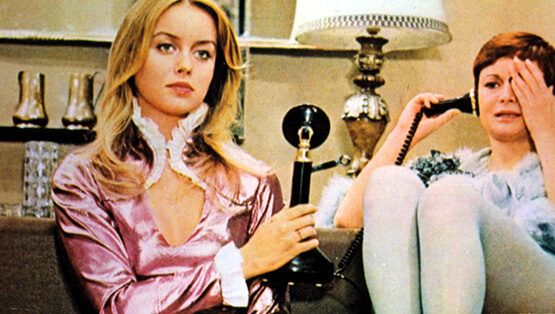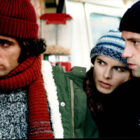Il Solco di Pesca (1975), directed by Maurizio Liverani, is a provocative drama that delves into themes of desire, power, and social appearances. Known for its bold narrative and striking visual style, the film blends psychological depth with erotic undertones, making it a memorable entry in the genre of Italian erotic drama of the 1970s. The film’s evocative title, which translates to “The Peach Furrow,” serves as a metaphor for sensuality and the complexities of human relationships.
A Web of Seduction and Power
The story revolves around Gilda (played by the captivating Martine Brochard), a woman who navigates a world of deceit, passion, and societal expectations. Set in the backdrop of affluent Italian society, Gilda becomes entangled in a web of intrigue involving men who are drawn to her enigmatic allure. The film explores the dynamics of relationships, highlighting the tensions between desire, manipulation, and genuine emotion.
Through its layered narrative, Il Solco di Pesca questions societal norms and exposes the fragility of human connections. Liverani’s direction focuses on psychological nuance, using subtle gestures and charged interactions to reveal the characters’ inner worlds.
The Location: A Scenic Backdrop of Italian Elegance
One of the film’s defining elements is its use of location to enhance the narrative. Il Solco di Pesca is set against the stunning backdrop of Liguria, a coastal region in northwest Italy. Known for its picturesque seaside towns, rugged cliffs, and vibrant Mediterranean landscapes, Liguria provides an atmosphere of both beauty and tension, mirroring the film’s themes.
Key scenes take place in opulent villas overlooking the sea, emphasizing the characters’ wealth and detachment from reality. The contrast between the serene, sunlit coastline and the emotional turmoil of the protagonists adds depth to the film’s visual storytelling. The Ligurian setting also reinforces the idea of isolation, as characters are frequently shown against vast, empty beaches or enclosed within the ornate confines of their homes.
This region’s distinct architecture—its pastel-colored houses, narrow alleyways, and sweeping views—serves as more than just a backdrop. It becomes a silent witness to the unfolding drama, its timeless elegance juxtaposing the fleeting passions and conflicts of the characters.
Cultural Context: Italian Cinema of the 1970s
Il Solco di Pesca is a product of its time, reflecting the openness and experimentation that characterized Italian cinema in the 1970s. This was a period when filmmakers explored themes of sexuality, morality, and the human psyche with a boldness that challenged traditional cinematic norms.
Liverani’s film fits within this context, using its provocative storyline to critique societal hypocrisies and explore the complexities of human relationships. The Ligurian setting, with its mix of natural beauty and cultural sophistication, underscores the film’s examination of appearance versus reality.
Legacy: A Cult Classic
While Il Solco di Pesca did not achieve the same mainstream success as other films of its era, it remains a cult classic for its unique storytelling and visual style. The film’s daring approach to its subject matter and its masterful use of Liguria as a setting have secured its place in the canon of Italian erotic cinema.
For fans of Italian film, Il Solco di Pesca offers a captivating look at the interplay between character and setting, seduction and isolation, making it a compelling work that continues to intrigue audiences today.
Watch today on Movieitaly+
Read more articles over here!






